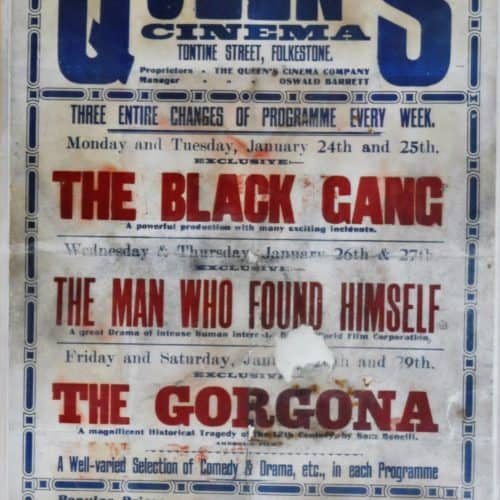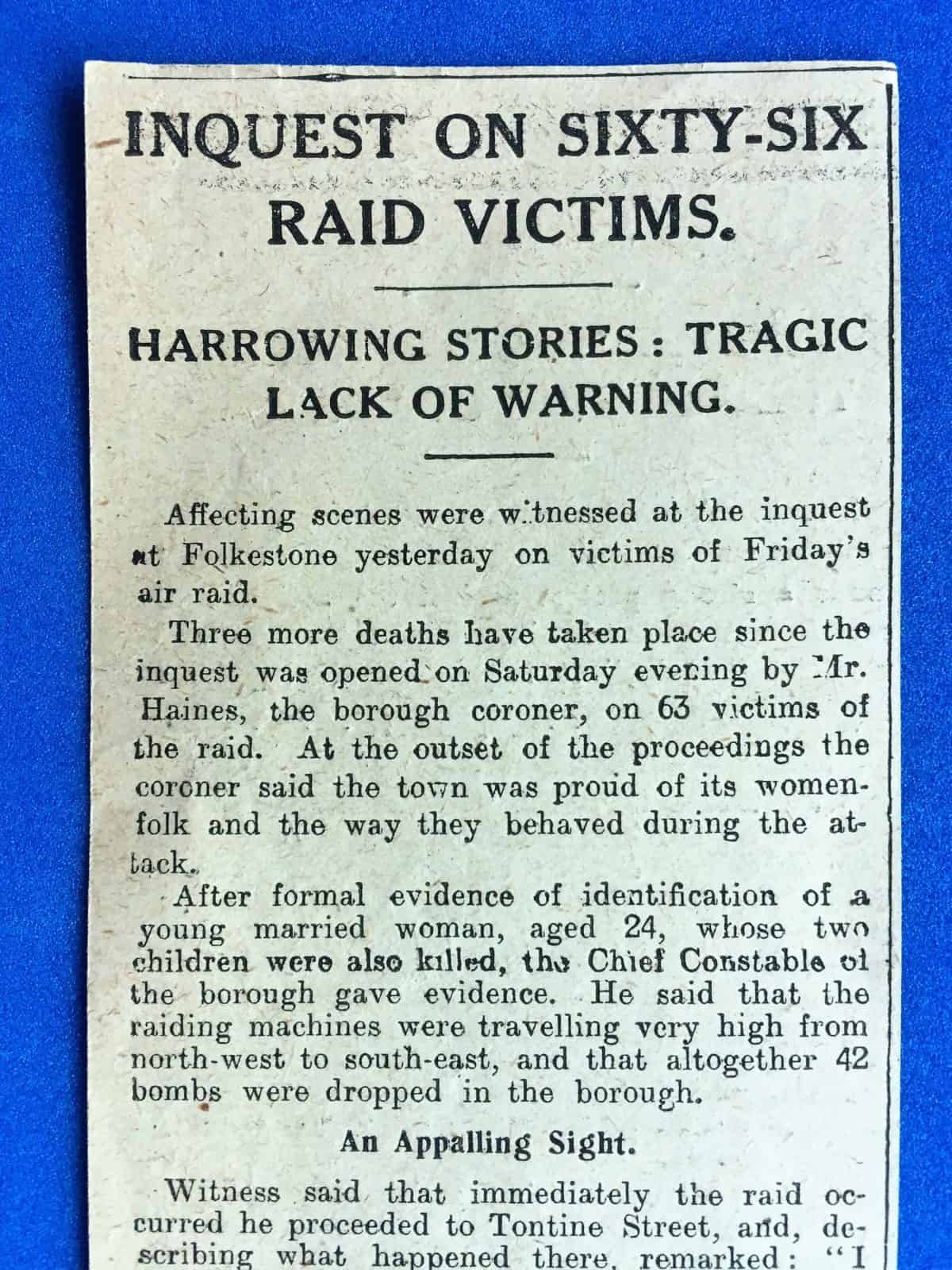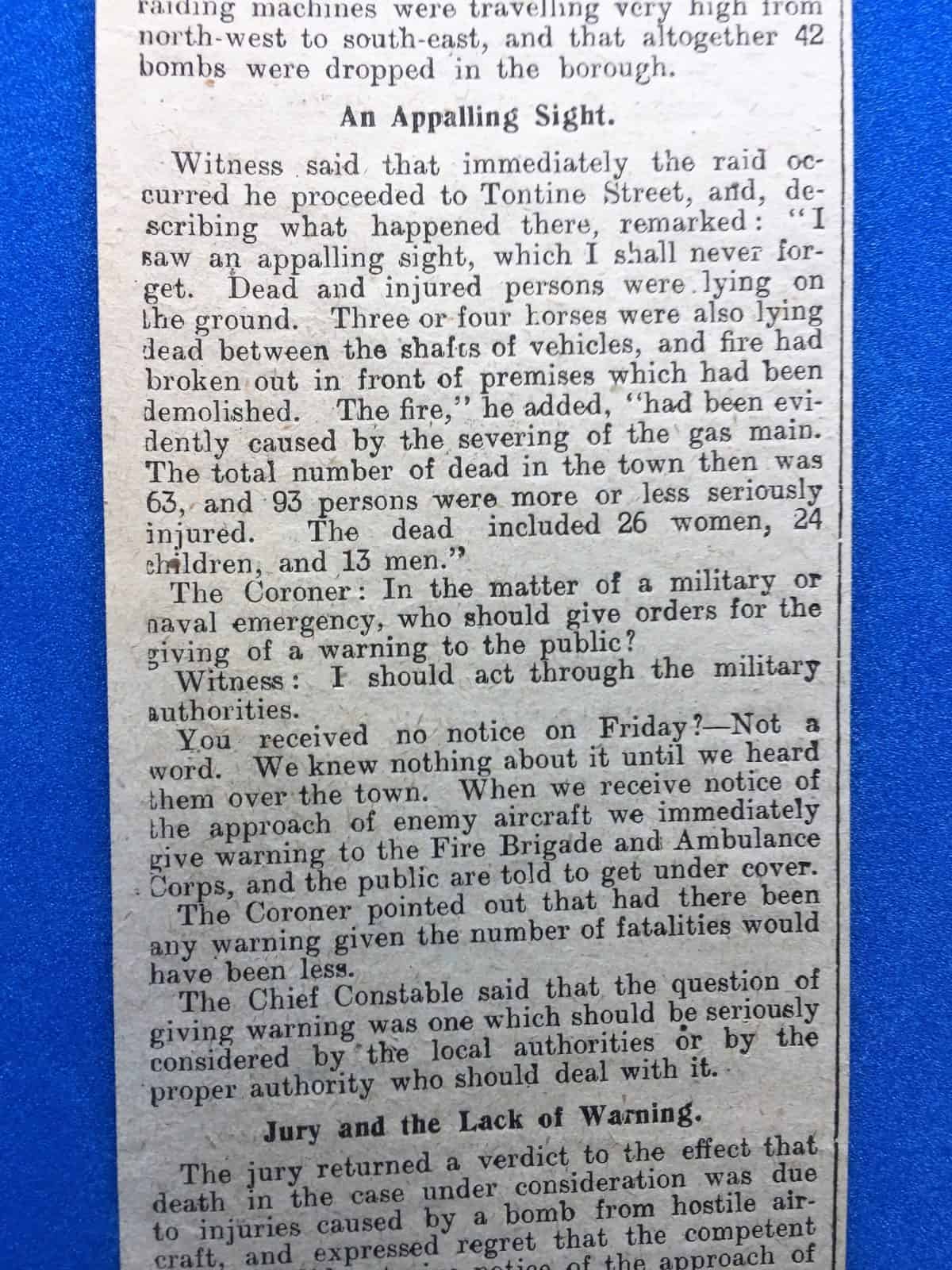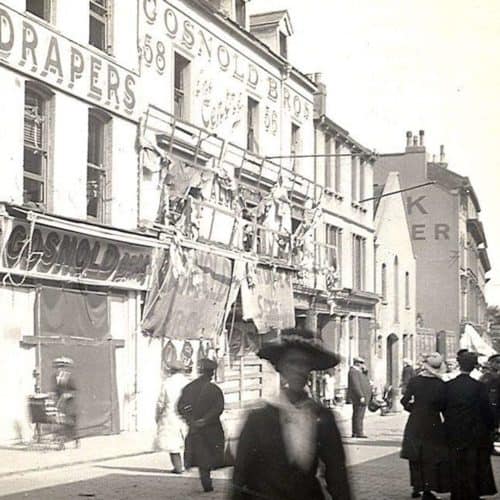WW1 5: Tontine St
This is Stokes Brothers, Greengrocer’s shop in Tontine Street, Folkestone just before World War 1.
Stokes had a reputation for selling high quality fresh fruit and vegetables, as well as household and kitchen coal. Can you spot the ‘Best Coals’ sign outside?
In World War 1 Tontine Street was a busy place, with lots of colourful shops and its very own cinema.
In January 1916, The Queen’s Cinema had a varied programme of comedy and drama films. Depending on what day you went, you could watch The Black Gang, The Man Who Found Himself or The Gorgona.
Seats cost 1 shilling, sixpence or threepence, depending where you sat. The cheap seats were a bad option though: in this cinema pillars badly obstructed the view!
Films were black and white and silent, with subtitles.
The ‘talkies’ didn’t arrive until the 1920s, but dramatic background music was played by an accompanist, usually on a piano.
In between the films they showed more serious news items about the war.
In late August 1916 cinemas were packed, as people flocked to see a film about The Battle of the Somme, including real footage from the trenches.
The noise of the battle could easily be heard in Folkestone.
Soldiers of the Buffs (East Kent Regiment), which included many soldiers from Folkestone, appear early in the film in the section Scenes at Bray, Platoons of the Buffs moving up on the evening before the attack.
You can watch it on the Imperial War Museum website:
Just after teatime on Friday May 1917, several high-flying aircraft were spotted approaching the town. One witness reported They looked like silver birds. The sun was shining upon them.
The planes were German Gotha bombers.
Returning from a failed attack on London they released 42 bombs on an undefended Folkestone.
One of these landed in a crowded Tontine Street, killing over 60 people and injuring many more. It completely destroyed Stokes’ greengrocer’s shop causing huge devastation to the surrounding area.

Among the dead were William Stokes, the owner of the shop, and his 14 year old son Arthur, who had been out picking bluebells earlier in the day.
Both appear in a poignant memorial to the victims by artist Roy Eastland.
Image copyright: Roy Eastland
This is a newspaper report, written a few days after the raid talks about the inquest into the air raid.
An Inquest is a legal inquiry led by a Coroner that meets to decide how people died.
What does this tell us about the air raid?
Taken a few weeks after the air raid, this photograph shows the empty space where Stokes Brothers shop once stood.
In the background, workmen are starting to rebuild it. Stokes Brothers continued as a successful and much-loved shop in the town until well after World War 2. The people of Folkestone were determined that despite the carnage life must go on.
Look at the children in the foreground. They are desperate to be in the photo!
How are their clothes different from today?
This is another photograph of Tontine Street taken shortly after the air raid.
The street has been cleared of debris and is open again for business.
Look closely at Gosnold Brothers, Drapers, at 56 and 58 Tontine Street. It suffered extensive damage in the air raid and is still boarded up.
Drapers sold cloth, silks and all sorts of other materials, that people bought to make their own clothes, curtains and all sorts of other household items.
The Tontine Street bombing shocked and appalled people, as its victims were mainly innocent women and children. It became known as The Great Air Raid.
It is still remembered in Folkestone today, more than 100 years later, both on Remembrance Day and in a special Memorial Garden.
To find out the stories of all those involved visit this site:







